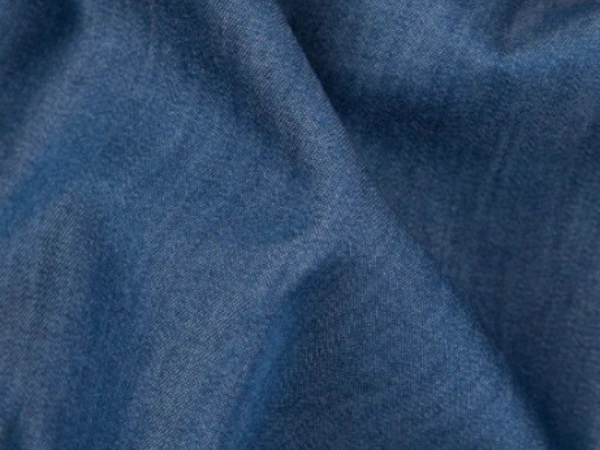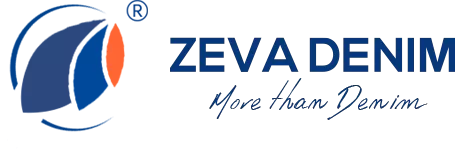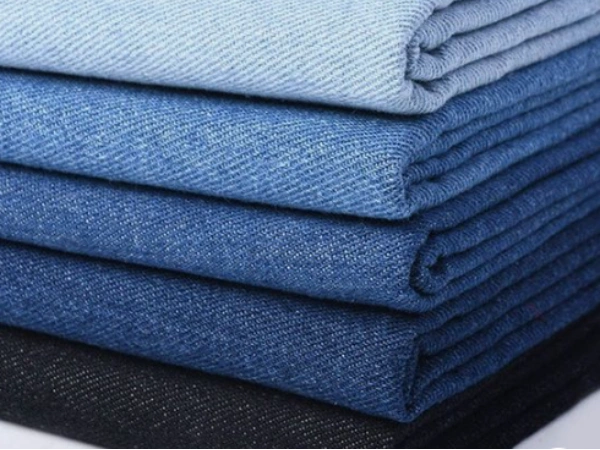Introduction
Denim is more than just a fabric; it is a cultural icon that has evolved over centuries. Originally designed for durability and utility, denim has become a staple in fashion, transcending age, gender, and style. Its versatility allows it to be crafted into various garments, from classic jeans to jackets, skirts, and dresses. As consumers become increasingly discerning about their clothing choices, understanding the different types of denim fabrics is essential. This article will delve into the advantages and disadvantages of eight popular types of denim fabrics: Cotton denim, Cotton + spandex denim, Cotton + polyester + spandex denim, Tencel denim, Knitted denim, Acetate denim, Silk denim, and Cashmere denim.
Cotton Denim
- Advantages
Cotton denim is the quintessential fabric that has defined the denim industry. Its durability and strength make it an ideal choice for everyday wear. The robust nature of cotton fibers allows denim garments to withstand the rigors of daily life, making them a long-lasting investment. For instance, a well-constructed pair of cotton jeans can last years, even with frequent use.
Breathability is another significant advantage of cotton denim. The natural fibers allow air to circulate, making it comfortable to wear in various climates. This feature is particularly beneficial during warmer months when breathability can significantly enhance comfort.

Moreover, cotton denim possesses a classic charm that appeals to a wide audience. Its timeless aesthetic makes it suitable for both casual and semi-formal occasions. Whether paired with a simple t-shirt or dressed up with a blazer, cotton denim remains a versatile choice.
- Disadvantages
Despite its many advantages, cotton denim does have some drawbacks. One of the most notable issues is its tendency to fade over time. Frequent washing and exposure to sunlight can lead to a loss of color, which may not be desirable for all consumers. For example, dark blue jeans may lose their rich hue after several washes, resulting in a more worn-out appearance.
Additionally, traditional cotton denim lacks stretch, which can limit comfort and mobility, especially in fitted styles. This limitation may deter some consumers who prioritize flexibility in their clothing.
Cotton + Spandex Denim
- Advantages
To address the limitations of pure cotton denim, many manufacturers have begun blending cotton with spandex. This combination enhances comfort and flexibility, allowing for a better fit. The added stretch makes cotton + spandex denim particularly popular for skinny jeans and form-fitting styles, as it allows for ease of movement without compromising on style.
Another significant advantage is that this blend retains its shape well. Unlike traditional cotton denim, which may sag or lose its form over time, cotton + spandex denim tends to maintain its silhouette, providing a flattering fit for longer periods.
- Disadvantages
However, cotton + spandex denim is not without its shortcomings. One potential issue is pilling, which can occur in areas of high friction, such as the inner thighs. This can detract from the overall appearance of the garment and may require additional care to maintain its look.
Moreover, while spandex enhances comfort, it may lose elasticity over time, leading to sagging and a less flattering fit. Consumers may find that their favorite pair of stretchy jeans becomes less form-fitting after several washes, necessitating a replacement sooner than expected.
Cotton + Polyester + Spandex Denim
- Advantages
This blend of cotton, polyester, and spandex offers a balanced approach to denim fabric. The inclusion of polyester significantly improves durability and wrinkle resistance, making it an excellent choice for those who lead active lifestyles. For example, a pair of jeans made from this blend can withstand the rigors of daily wear while maintaining a polished appearance.
Additionally, the combination enhances color retention, ensuring that the denim maintains its vibrant hue even after multiple washes. This feature is particularly appealing to consumers who prefer bold colors and patterns in their denim.
- Disadvantages
However, the inclusion of polyester can lead to poor breathability. This can make the fabric less comfortable in hot weather, as it may trap heat and moisture against the skin. Consumers who prioritize comfort in warmer climates may find this aspect less appealing.
Furthermore, there are environmental concerns associated with polyester production. As consumers become more eco-conscious, the use of synthetic fibers may deter some individuals from choosing this type of denim.
Tencel Denim
- Advantages
Tencel, a fiber made from sustainably sourced wood pulp, is gaining traction in the denim market for its eco-friendly production process. This environmentally conscious approach appeals to consumers who prioritize sustainability in their clothing choices. Tencel denim is known for its softness and moisture-wicking properties, making it comfortable to wear in various conditions. For instance, Tencel denim can keep the wearer cool and dry, making it an excellent choice for summer wear.
Another significant advantage is its luxurious feel. Tencel denim drapes beautifully, providing a flattering silhouette that enhances the overall look of the garment. This quality makes it suitable for both casual and dressier occasions.

- Disadvantages
Despite its many benefits, Tencel denim does come with some drawbacks. The primary concern is its higher cost compared to traditional cotton denim. This price point may not be feasible for all consumers, particularly those on a budget.
Additionally, Tencel denim may have limited availability in the market. While its popularity is growing, consumers may find it challenging to locate specific styles or sizes, which can be frustrating when shopping for denim.
Knitted Denim
- Advantages
Knitted denim is a relatively newer addition to the denim family, offering a unique blend of comfort and stretch. The knitting process allows for greater flexibility, making it an excellent choice for casual wear. This type of denim is particularly suitable for various styles, from relaxed fits to more tailored looks. For instance, knitted denim joggers can provide the comfort of sweatpants while maintaining a stylish appearance, making them ideal for both lounging and casual outings.
Another significant advantage of knitted denim is its softness. The fabric tends to be gentler on the skin compared to traditional woven denim, making it a popular choice for those who prioritize comfort in their clothing.
- Disadvantages
However, knitted denim does have its shortcomings. One of the primary concerns is its poor structure. Unlike woven denim, which maintains a more rigid form, knitted denim can lack the structure that some consumers prefer. This may lead to a more relaxed appearance that may not be suitable for all occasions, particularly in professional settings.
Additionally, knitted denim may not maintain its shape as well as other types of denim. Over time, the fabric can stretch out, leading to sagging and a less flattering fit. Consumers may find that their favorite knitted denim pieces require more frequent replacement than traditional denim.
Acetate Denim
- Advantages
Acetate denim is known for its luxurious feel and drape. The fabric has a beautiful sheen that adds an elegant touch to any garment, making it a popular choice for dressier denim pieces. Acetate denim also boasts good color retention, ensuring that vibrant hues remain intact even after multiple washes. This quality makes it an attractive option for those who want their denim to stand out.

Moreover, the lightweight nature of acetate denim makes it suitable for warmer climates. Its breathable properties allow for comfort during hot weather, making it a versatile choice for summer wear.
- Disadvantages
On the downside, acetate denim is not very durable compared to other types of denim. It can be prone to wear and tear, which may lead to a shorter lifespan for garments made from this fabric. Additionally, acetate denim requires special care; it is sensitive to heat and may shrink or lose its shape if not washed properly. This can be a significant drawback for consumers who prefer low-maintenance clothing.
Silk Denim
- Advantages
Silk denim offers a unique combination of softness and luxury. The fabric’s luxurious texture makes it a standout choice for high-end fashion, providing a sophisticated alternative to traditional denim. Silk denim drapes beautifully, enhancing the overall look of any outfit. For example, a silk denim shirt can elevate a casual ensemble, making it suitable for both day and evening wear.
Another advantage of silk denim is its unique appearance. The natural sheen of silk adds an element of elegance that is hard to replicate with other fabrics, making it a favorite among fashion-forward consumers.
- Disadvantages
However, silk denim comes with high maintenance costs. It is prone to staining and may require dry cleaning, which can be inconvenient and expensive. Additionally, the cost of silk denim is significantly higher than that of traditional denim, making it less accessible for everyday wear. Consumers may find that while silk denim offers a luxurious experience, it may not be practical for regular use.
Cashmere Denim
- Advantages
Cashmere denim is the epitome of luxury, combining the softness of cashmere with the casual appeal of denim. This unique blend offers exceptional warmth and comfort, making it perfect for cooler weather. The luxurious feel of cashmere denim elevates casual wear, allowing consumers to enjoy the best of both worlds—comfort and sophistication.

Another significant advantage is its unique blend of luxury and casual clothing. Cashmere denim can be styled in various ways, making it suitable for both relaxed and more formal occasions. For instance, a cashmere denim jacket can be paired with a dress for a chic look or worn with jeans for a more laid-back vibe.
- Disadvantages
The primary disadvantage of cashmere denim is its very high cost. It is one of the most expensive types of denim available, which may not be feasible for all consumers. Additionally, cashmere denim requires careful cleaning and maintenance to preserve its quality. Consumers must be diligent in following care instructions to avoid damaging the fabric, which can be a deterrent for those seeking low-maintenance options.
Conclusion
In summary, each type of denim fabric presents its own set of advantages and disadvantages. Cotton denim remains a classic choice for its durability and breathability, while blends like cotton + spandex and cotton + polyester + spandex offer enhanced comfort and resilience. Knitted denim provides stretch and comfort but may lack structure, while acetate denim offers a luxurious feel at the cost of durability. Silk denim stands out for its unique texture and appearance, but it comes with high maintenance costs. Finally, cashmere denim combines luxury and casual wear but is often prohibitively expensive.
When choosing the right denim fabric, it is essential to consider personal needs, lifestyle, and budget. By understanding the characteristics of each type of denim, consumers can make informed decisions that align with their preferences and values. Whether you prioritize comfort, durability, or luxury, there is a denim fabric that suits your style.





